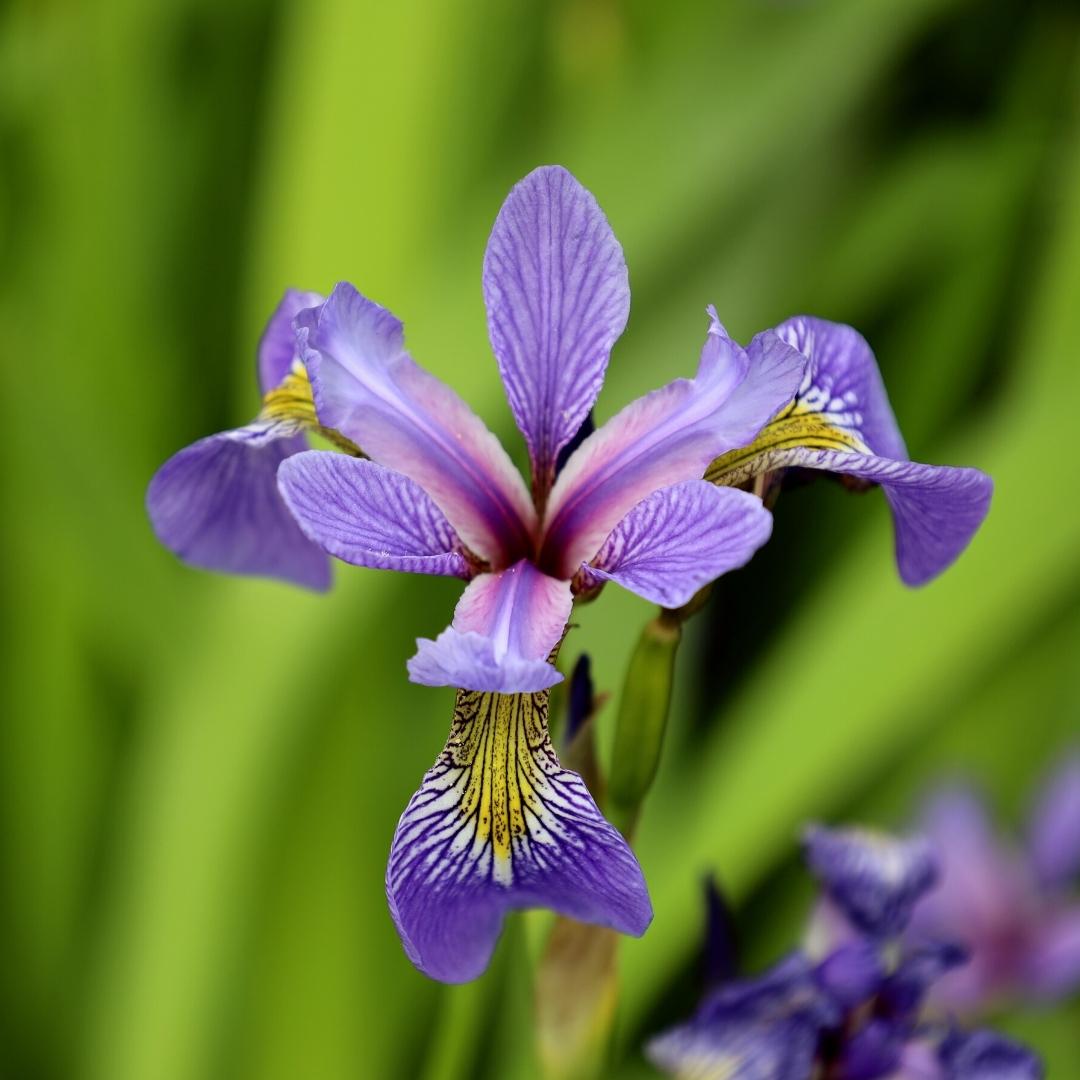Garden Goods Direct | Blue Flag Iris
$31.95
Iris veriscolor, commonly called northern blue flag, is a clump-forming iris that is native to marshes, swamps, wet meadows, ditches, and shorelines. its purple petals spread out flat mait an attractive place for feeding by hummingbirds. Also known as Blue Flag Iris. b It is a marginal aquatic plant that forms a clump of narrow, arching-to-erect, sword-shaped, blue-green leaves (to 24 inches long and 1 inch wide). Flowering stalks rise from the clump to 30 inches tall in late spring, with each stalk producing 3-5 bluish-purple flowers (to 4 inches wide) with bold purple veining. Falls (sepals) have a central yellow blotch surrounded by a white zone. Clumps spread slowly by tough, creeping rhizomes. Northern blue flag thrives in wetland habitats frequented by rushes and sedges (the “flag” part of the common name comes from the middle English word flagge meaning rush or reed). Rhizome is poisonous. Grow in medium to wet soils in full sun to part shade. This iris may be grown in up to 2-4 inches of shallow standing water (muddy bottom or containers), or in moist shoreline soils, or in constantly moist humusy soils of a border. Propagate by division after bloom. Wear gloves when dividing the rhizomes. After fall frost, plant leaves may be trimmed back to about 1” above the crown. Will naturalize to form colonies in the wild. Iris versicolor makes an excellent focal point in a small pond or can be used in an area that is too wet for other garden plants. Best grouped in sunny areas of ponds or water gardens. Also can be grown in moist border areas. Genus named for the Greek goddess of the rainbow. Specific epithet means having various colors.





